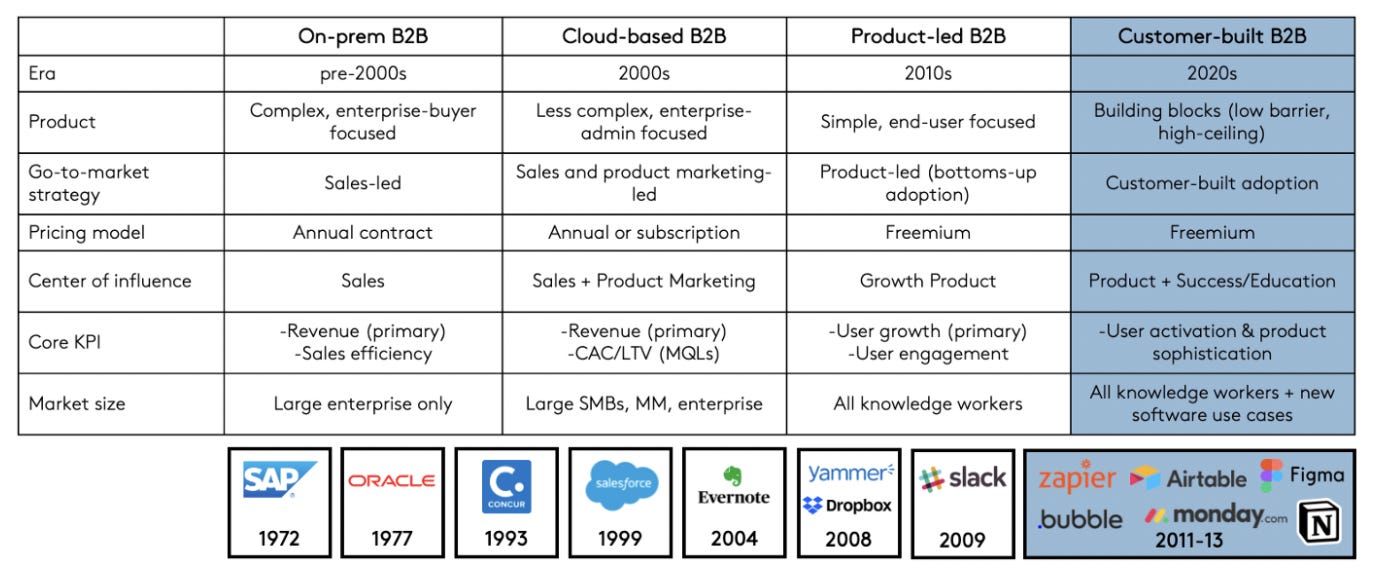[…] in·ter·sti·tial
/ˌin(t)ərˈstiSHəl/
adjective
of, forming, or occupying interstices (an intervening space, especially a very small one).
"the interstitial space"
ECOLOGY
(of minute animals) living in the spaces between individual sand grains in the soil or aquatic sediments.
"the interstitial fauna of marine sands"
Product is interstitial. Less so a very obvious, grand bridge between functions. Very much translucent glue. Obvious in the outcome, and must be capable of demonstrating value. The less visible, the better. Product is interstitial.
🚪 Welcome and welcome back
Welcome to all new subscribers and thanks everyone for sticking with this very occasional product newsletter. This edition will be a series of random thoughts. I’m feeling lucky.
🌳 The Long and the Short of It*
*Your product
This essay is about making choices when precedents or patterns don’t exist. How do we distinguish between long and short term problems? When we do make an investment to solve something in the short term, while having to ultimately confront the same issues down the road (i.e. staving off the inevitable)? Are we truly solving for the long term? Tackling something in the short term is like paying interest; the principal loan is still outstanding, even though it’s a larger amount. Sometimes it’s worth it. To make it somewhat more concrete:
Do we upgrade and maintain the current stack, knowing it won’t accomodate our projected growth in 18 months, or do we invest in an entirely new set of technologies now?
Or,
Do we enter a new geographical market, where we sense demand?
⚽ There are absolutely times when you can kick the ball down the road, so to speak. But if that’s the course of action, it needs to be made consciously with everyone on board. Only then can there be a real plan to actually solve the larger set of issues that emerge as a company grows, demanding a technology and process refresh. (This is why Team Topologies is so powerful).
It can be attractive to spend less (time, effort, resources) on an apparent fix, when in fact we’ve only succeeded in moving the goal posts in to the future.
We tend to equate long term thinking with strategic thinking; but thinking in the short term also requires an alignment with overall strategy. Yes, you can be a strategic, short-term thinker. What do we need to do now to stay successful or continue to be successful (or stop doing). The reality is short term thinking and decisions have enormous consequences over the long term. And not making a decision is making a decision. 🙃
What we’ve been doing to get to where we are now won’t make us successful in the future.
Success in the future doesn’t necessarily require prognostication; it usually comes down to having a firm grip on the here and now. So here’s a framework (checklist?) for tackling short and long term problems, and how to distinguish between them; it isn’t always obvious.
As indicated the most important step is the development of the different plans; yes, that’s time consuming. The framing is just as important - there are no shortcuts. Ultimately, it’s about risk. Is there a clear sense of the risk incurred by doing x as compared to investing more to do y? If uncertainty remains, it will more difficult to marshall the people and resources to embark on the best course of action.
🔗 Further reading
Pre-Mortem: Working Backwards in Software Design by Seema Thapar
🌩️ Strategic Thinkers
A most excellent diagram
Devising and executing product strategy is a series of interrelated activities. Inspired by John Cutler, Misael Neto has done something very cool by visualizing the phases and activities that comprise product strategy and execution. It’s a helpful abstraction that take on different forms depending on industry vertical and other factors. Safe to say that if you’re doing most or all of these things - and measuring! - then it’s a good sign of overall maturity within the firm.
Misael has even incorporated the Double Diamond concept created by the UK Design Council and contextualized it further as a key activity adjoining the problem and solution spaces; it can be a bridge to execution. In practice, there are many considerations in terms of who is involved and the degree of effort dedicated to reducing uncertainty about the performance of a product or feature in the marketplace.
It’s easy to dwell in this space, since it provides the comfort of doing something, when in fact the market is eagerly awaiting your offering and competitors can out manoeuvre and out execute. Timing is everything, but don’t “rush to failure.”
Anyway, check it out and check off the things your own company does well, and where improvements may be merited. Yes, things can always improve. Starting something new is often the most difficult step.

➕ There are other product newsletters, great ones even
Can’t get enough? Hit subscribe. But don’t get caught in a bubble.
🔖 B2B
The consumarization of enterprise software… who’s buying now?
Check out David Peterson’s writeup on Medium about no/low-code tools and the enterprise software space. The enterprise buyer remains unique even if end users’ expectations of software have been elevated by their experiences with consumer apps.
But no/low-code tools are changing the game by enabling those end users to design and build their own experience. Bottom line - there’s a ton of opportunity for new entrants to meet the new expectations of today’s enterprise users.
Terrific article worth reading in its entirety.
👍 That’s it!
I’ve strayed from the format a bit and hope you’ve enjoyed reading this edition of Leading Product.









